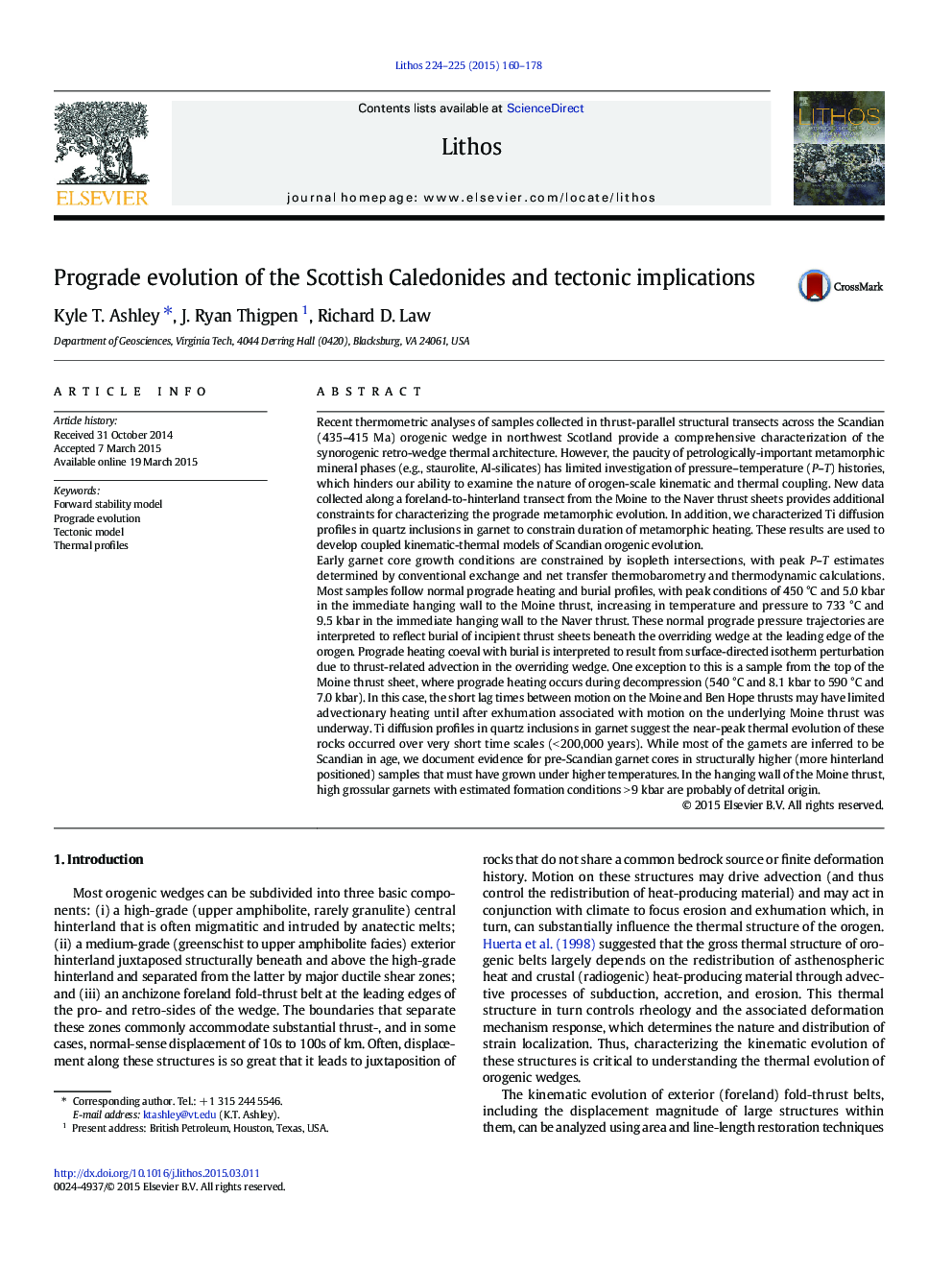| Article ID | Journal | Published Year | Pages | File Type |
|---|---|---|---|---|
| 4715732 | Lithos | 2015 | 19 Pages |
Abstract
Early garnet core growth conditions are constrained by isopleth intersections, with peak P-T estimates determined by conventional exchange and net transfer thermobarometry and thermodynamic calculations. Most samples follow normal prograde heating and burial profiles, with peak conditions of 450 °C and 5.0 kbar in the immediate hanging wall to the Moine thrust, increasing in temperature and pressure to 733 °C and 9.5 kbar in the immediate hanging wall to the Naver thrust. These normal prograde pressure trajectories are interpreted to reflect burial of incipient thrust sheets beneath the overriding wedge at the leading edge of the orogen. Prograde heating coeval with burial is interpreted to result from surface-directed isotherm perturbation due to thrust-related advection in the overriding wedge. One exception to this is a sample from the top of the Moine thrust sheet, where prograde heating occurs during decompression (540 °C and 8.1 kbar to 590 °C and 7.0 kbar). In this case, the short lag times between motion on the Moine and Ben Hope thrusts may have limited advectionary heating until after exhumation associated with motion on the underlying Moine thrust was underway. Ti diffusion profiles in quartz inclusions in garnet suggest the near-peak thermal evolution of these rocks occurred over very short time scales (< 200,000 years). While most of the garnets are inferred to be Scandian in age, we document evidence for pre-Scandian garnet cores in structurally higher (more hinterland positioned) samples that must have grown under higher temperatures. In the hanging wall of the Moine thrust, high grossular garnets with estimated formation conditions > 9 kbar are probably of detrital origin.
Keywords
Related Topics
Physical Sciences and Engineering
Earth and Planetary Sciences
Geochemistry and Petrology
Authors
Kyle T. Ashley, J. Ryan Thigpen, Richard D. Law,
